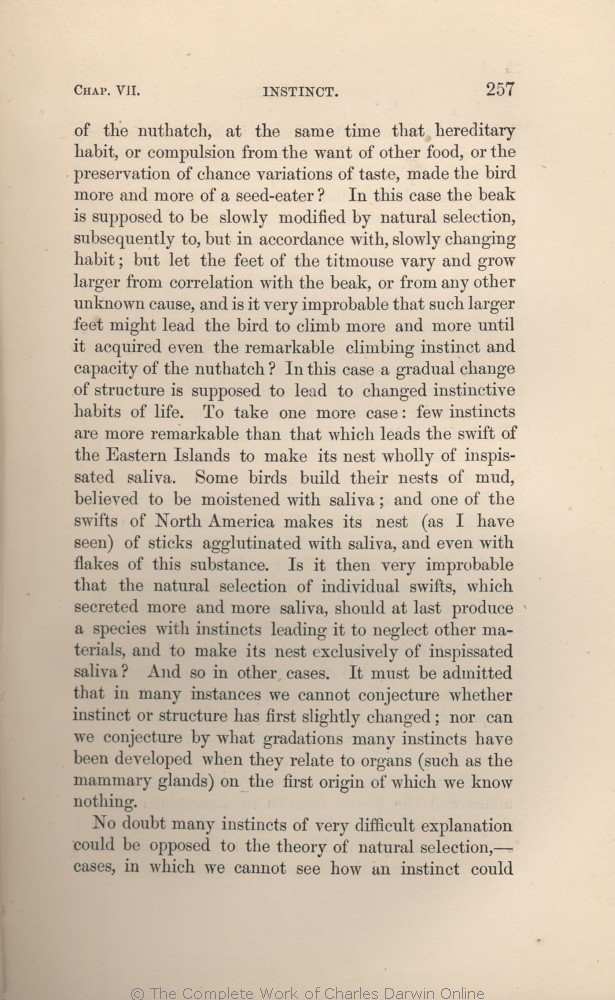of the nuthatch, at the same time that
hereditary | hereditary 1861 1866 | hereditary 1869 1872 |
| compulsion 1861 1866 | | compulsion, 1869 1872 |
| from the want of other food, or the preservation of chance 1861 1866 |
| or spontaneous 1869 1872 |
| made 1861 1866 | | led 1869 1872 |
| more 1861 1866 |
| to become more 1869 1872 |
| habit; 1861 1866 | | habits 1869 1872 |
| but 1861 1866 |
| or taste; but 1869 1872 |
| very 1861 1866 | | is not 1869 1872 |
| might 1861 | | would 1866 1869 1872 |
| and more 1861 1869 1872 | and more 1866 |
| even 1861 1866 | even 1869 1872 |
| capacity 1861 1866 | | power 1869 1872 |
| nuthatch? 1861 1866 | | nuthatch. 1869 1872 |
| habits 1861 | | habits. 1866 1869 1872 |
| life. 1861 | life. 1866 1869 1872 |
| must 1861 1866 | | must, 1869 1872 |
| be 1861 1866 | | however, be 1869 1872 |
| instinct 1861 1866 |
| it was instinct 1869 1872 |
| has 1861 1866 | | which 1869 1872 |
| slightly changed; nor can we conjecture by what gradations many instincts have been developed when they relate to organs (such as the mammary glands) on the first origin of which we know nothing. 1861 1866 |
| varied. 1869 1872 |
|
|
No doubt many instincts of very difficult explanation could be opposed to the theory of natural
selection,— | selection,— 1859 1860 1861 1866 | | selection— 1869 1872 |
|









